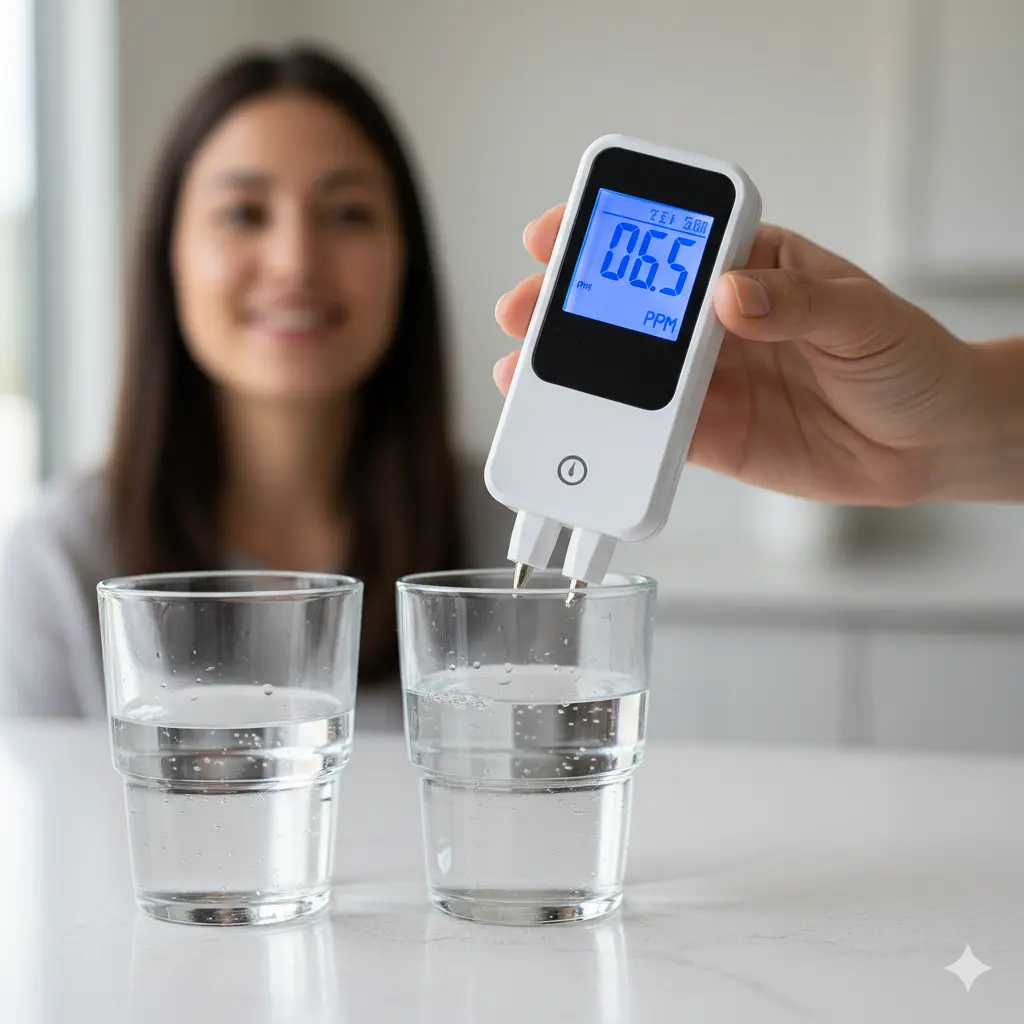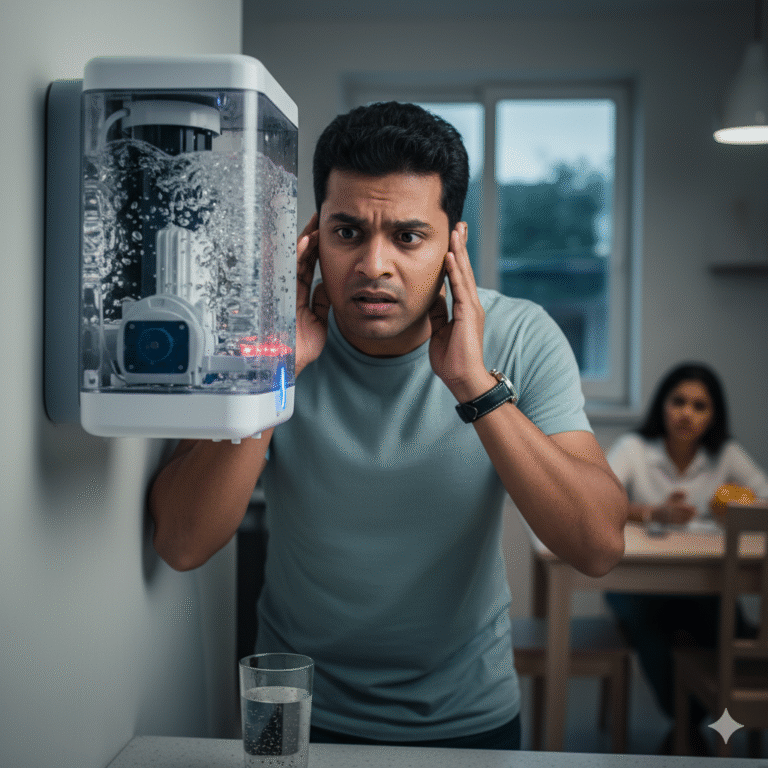How to Check Your RO Water TDS at Home (A 5-Minute Guide)

How do you know if your expensive RO water purifier is actually working? You can’t just trust the taste. The most important job of an RO is to remove Total Dissolved Solids (TDS) from your water.
If your RO isn’t removing TDS, you’re just drinking fancy (and potentially unsafe) tap water.
The great news is that you don’t have to be a scientist to find out. With a simple tool, you can learn how to check your RO water TDS in less than five minutes. This simple test is the best “health check-up” you can give your water purifier.
This guide will walk you through what TDS is, how to measure it, and what the numbers really mean.
What is TDS and Why Does It Matter?
TDS (Total Dissolved Solids) is a measurement of everything dissolved in your water, including salts, minerals (like calcium and magnesium), and metals.
- Why it Matters: While some minerals are fine, high TDS levels (especially in borewell water) can include harmful substances like arsenic, fluoride, and nitrates. High TDS also makes water taste salty or “hard.”
- The Job of Your RO: An RO membrane is designed to physically block and remove these dissolved solids, reducing the TDS level by 90% or more.
The only way to know if your RO is doing its job is to measure the TDS. For this, you need one simple tool.
The Tool You’ll Need: A Digital TDS Meter
A digital TDS meter is a small, pen-sized device that instantly measures the TDS level in your water. They are inexpensive and widely available online. You don’t need a fancy model; a basic one works perfectly for this test.

How to Check Your RO Water TDS (Step-by-Step)
Ready? This will take just a few minutes.
- Get Two Water Samples:
- Sample A: Fill a clean glass with your regular, unfiltered tap water (or borewell water).
- Sample B: Fill another clean glass with water from your RO water purifier.
- Turn On Your TDS Meter: Remove the cap and press the “ON” button. Make sure the reading shows “000”.
- Test Your Tap Water (Sample A):
- Dip the meter into the glass of tap water up to the immersion level (usually marked on the side).
- Gently swirl it to remove any air bubbles.
- Wait a few seconds for the number to stabilize. This number is your “Input” TDS. Write it down. (e.g., 600 PPM).
- Test Your RO Water (Sample B):
- Rinse the end of the TDS meter with a little RO water and wipe it clean.
- Now, dip the meter into the glass of RO water.
- Wait for the number to stabilize. This is your “Output” TDS. This is the number that matters.
Understanding Your TDS Results: What’s a “Good” Number?
This is the most important part. Here’s how to read your results.
- Tap Water (Sample A): In many parts of India, this number can be very high, like 300 PPM to 800 PPM+. This is why you bought an RO in the first place!
- RO Water (Sample B): This number should be at least 90% lower than your tap water.
- Example: If your tap water is 600 PPM, your RO water should be around 60 PPM or less.
Here is a general guide based on the <a href=”httpsm://bis.gov.in/standards/technical-department/food-and-agriculture/” target=”_blank” rel=”dofollow”>Bureau of Indian Standards (BIS)</a> for drinking water (IS 10500):
- 0-50 PPM: This is too low. Water may taste flat and is stripped of all minerals. Your RO’s “TDS Adjuster” may be closed too much.
- 50-150 PPM: This is the ideal range for RO-purified drinking water. It’s pure but retains some essential minerals for a good taste.
- 150-250 PPM: This is acceptable and safe, but on the higher side.
- Above 250 PPM: This is a warning sign. If your RO water shows a TDS this high (and your tap water is much higher), your RO membrane is not working effectively and is letting contaminants through.
Your RO’s TDS is High. What Now?
If you just learned how to check your RO water TDS and found your purified water is above 200-250 PPM, your RO is failing its one and only job.
This is a clear sign that your RO membrane is exhausted, torn, or has failed. It is no longer purifying your water and must be replaced.
Do not continue to drink this water. You are overdue for a professional check.
- For a full check-up and membrane inspection, book our <a href=”https://rosaleandservices.com/product/water-purifier-service/” target=”_blank” rel=”noopener”>Water Purifier Service</a>.
- If you know the membrane is bad, you can book a <a href=”https://rosaleandservices.com/product/water-purifier-repairing/” target=”_blank” rel=”noopener”>Water Purifier Repair</a>.
According to the <a href=”https://www.who.int/news-room/fact-sheets/detail/drinking-water” target=”_blank” rel=”dofollow”>World Health Organization (WHO)</a>, safe drinking water is vital, and high TDS can be an indicator of health-hazardous contaminants.
Checking your TDS every month is the fastest, cheapest, and easiest way to ensure your family is drinking truly pure water. Don’t guess—test!

